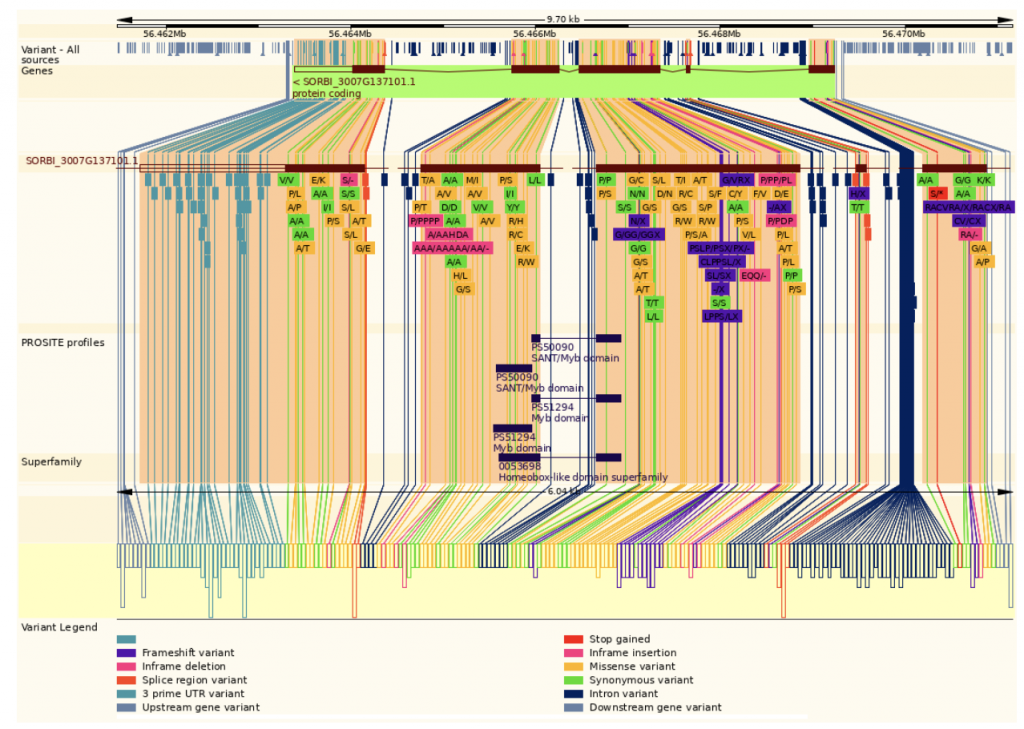Optimizing Crop Traits by Semi-Dwarfism: Genetic Breakthroughs in Maize and Sorghum
In evolutionary genetic research it is known that large-effect mutations tend to go beyond the optimal level for the trait, resulting in antagonistic effects (Fisher, 1930). However, these traits can be successfully tuned by collecting variations on the allele in breeding lines and then using phenotypic selection to progressively optimize the trait. In maize, less than 25 single gene mutations influence plant height. In sorghum, traditional landraces are tall, but three of four known recessive dwarfing alleles have been found in commercial grain sorghum (typically called 3-dwarf hybrids). The development of new semi-dwarf alleles in cereals has aided in the production of better crops. Researchers from Corteva Agriscience, HudsonAlpha Institute for Biotechnology, Kansas State University, Purdue University, Colorado State University and Napigen Inc. sought to isolate, collect and evaluate dwarfing alleles in both maize (Zea mays L.) and sorghum (Sorghum bicolor L.) in an effort to understand how a semi-dwarf mutant trait was optimized over time. In maize, the scientists investigated the brachytic1 (br1, Zm00001eb041450) Mu insertion alleles to find a “tuned allele” resulting in agronomically optimal height reduction. One recessive semi-dwarf line was found in the F2 population of a Mu transposon line crossed with an elite inbred line (br1-Mu). Jiao et al., used a modified PCR-based Sequence Amplified Insertion Flanking Fragment (SAIFF) approach to clone the (br1-Mu) alleles and then used histology and RNA-Seq to study the mechanism of semi-dwarfism. The sorghum ortholog, SbBr1 (Sobic.007G137101), falls within qHT7.1, a major plant height QTL, and is alternatively spliced in at least two sorghum lines. The authors suggest that the mutant allele is the alternative transcript and may have been optimized in a similar manner to the maize mutant br1.
SorghumBase examples:


Reference:
Jiao S, Mamidi S, Chamberlin MA, Beatty M, Thatcher S, Simcox KD, Maina F, Wang-Nan H, Johal GS, Heetland L, Marla SR, Meeley RB, Schmutz J, Morris GP, Multani DS. Parallel tuning of semi-dwarfism via differential splicing of Brachytic1 in commercial maize and smallholder sorghum. New Phytol. 2023 Sep 22. PMID: 37737036. doi: 10.1111/nph.19273. Read more


